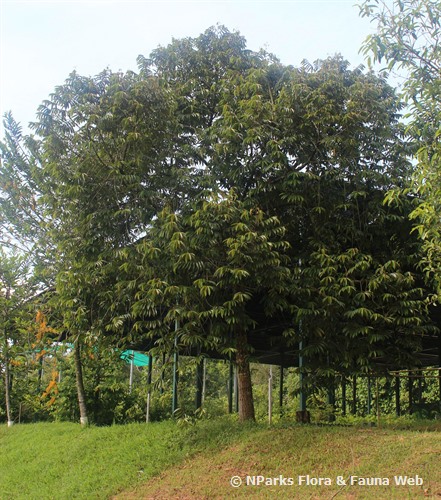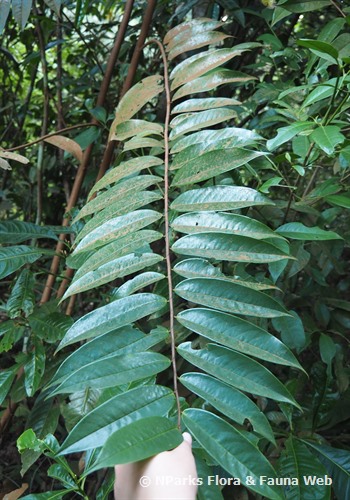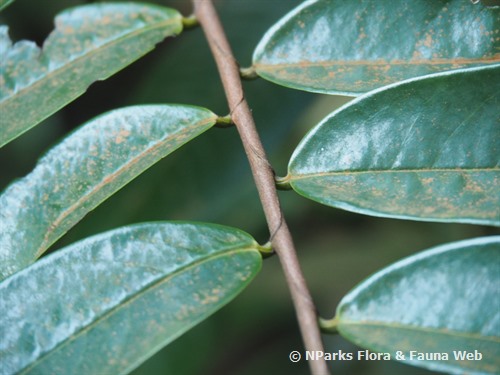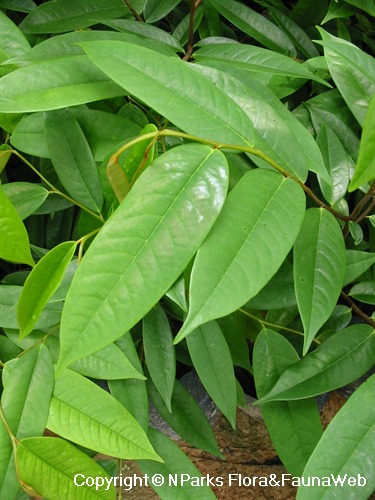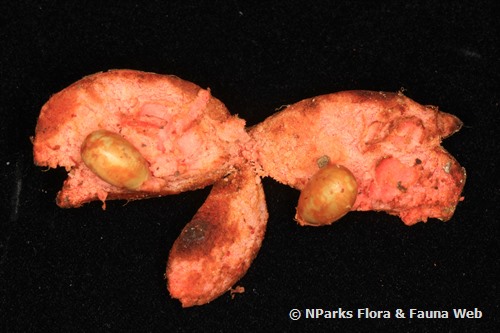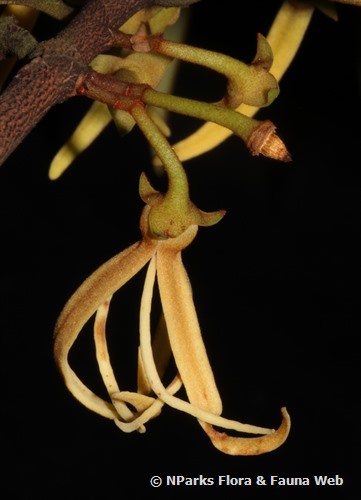
Back
Xylopia ferruginea (Hook.f. & Thoms.) Hook.f. & Thoms.
| Family Name: | Annonaceae |
| Common Name: | Stilted Antoi, Antoi Jangkang, Jangkang Bukit |
Name
Classifications and Characteristics
| Plant Division | Angiosperms (Flowering Seed Plants) (Dicotyledon) |
|---|---|
| Plant Growth Form | Tree (Medium (16m-30m)) |
| Lifespan (in Singapore) | Perennial |
| Mode of Nutrition | Autotrophic |
| Plant Shape | Irregular |
| Maximum Height | 20 m |
Biogeography
| Native Distribution | Thailand, Sumatra, Peninsular Malaysia, Singapore, and Borneo |
|---|---|
| Native Habitat | Terrestrial (Primary Rainforest, Freshwater Swamp Forest) |
| Preferred Climate Zone | Tropical |
| Local Conservation Status | Native to Singapore (Endangered (EN)) |
Description and Ethnobotany
| Growth Form | It is a tree up to 20 m tall, with orange-brown bark, and developing stilt roots if grown in waterlogged conditions. |
|---|---|
| Foliage | Its alternate, stalked leaves have leathery leaf blades that are narrowly oblong, shiny dark green and hairless above, fine purplish-brown hairy below, and 9–16 by 2.7–5 cm. Its leaf blade veins are more prominent below |
| Flowers | Its flowers grow singly or in clusters of 2–4, are fragrant, yellow, with petals that are 5–6 cm long. Its outer petals are 3–5 mm broad, while its inner petals are 1–1.5 mm broad with 3 corners. |
| Fruit | Its fruit is red, cylindrical, somewhat resembling a string of beads when dry, and 5–12.5 cm by 6 mm. Each fruit contains several oblong and wrinkled seeds that are 7 mm long. |
| Habitat | It grows in inland forests as well as freshwater swamp forests. |
| Associated Fauna | Its flowers are insect-pollinated. |
| Cultivation | It can be propagated by seed. |
| Etymology | Greek Xylopia, bitter wood; Latin ferruginea, rusty brown, possibly referring to the colour of the undersides of the leaf blades or the flowers |
| Ethnobotanical Uses | Medicinal: A decoction of the bark is used to stop vomiting. Timber & Products: Its bark is used to make partitions while its timber is used in the construction of roof structures. |
Landscaping Features
| Landscaping | It is suitable for parks, growing in waterlogged soils or edges of ponds. |
|---|---|
| Desirable Plant Features | Fragrant |
| Landscape Uses | Parks & Gardens, Riverine, Pond / Lake / River |
Fauna, Pollination and Dispersal
| Pollination Method(s) | Biotic (Fauna) |
|---|---|
| Seed or Spore Dispersal | Biotic (Fauna) |
Plant Care and Propagation
| Light Preference | Full Sun |
|---|---|
| Water Preference | Moderate Water, Lots of Water |
| Plant Growth Rate | Moderate |
| Rootzone Tolerance | Moist Soils, Waterlogged Soils (Drains Site, Does not Drain Site) |
| Propagation Method | Seed |
Foliar
| Foliage Retention | Evergreen |
|---|---|
| Mature Foliage Colour(s) | Green |
| Mature Foliage Texture(s) | Hairy / Hirsute, Leathery |
| Foliar Type | Simple / Unifoliate |
| Foliar Arrangement Along Stem | Alternate |
| Foliar Attachment to Stem | Petiolate |
| Foliar Shape(s) | Non-Palm Foliage (Oblong) |
| Foliar Venation | Pinnate / Net |
| Foliar Margin | Entire |
| Leaf Area Index (LAI) for Green Plot Ratio | 3.0 (Tree - Intermediate Canopy) |
Floral (Angiosperm)
| Flower & Plant Sexuality | Bisexual Flowers |
| Flower Colour(s) | Yellow / Golden |
|---|---|
| Flower Grouping | Solitary, Cluster / Inflorescence |
| Flower Location | Axillary |
Fruit, Seed and Spore
| Mature Fruit Colour(s) | Red |
|---|---|
| Fruit Classification | Aggregate Fruit (Syncarp) |
| Fruit Type | Fleshy Fruit , Non-Accessory Fruit |
Image Repository
Others
| Master ID | 1909 |
|---|---|
| Species ID | 3202 |
| Flora Disclaimer | The information in this website has been compiled from reliable sources, such as reference works on medicinal plants. It is not a substitute for medical advice or treatment and NParks does not purport to provide any medical advice. Readers should always consult his/her physician before using or consuming a plant for medicinal purposes. |

